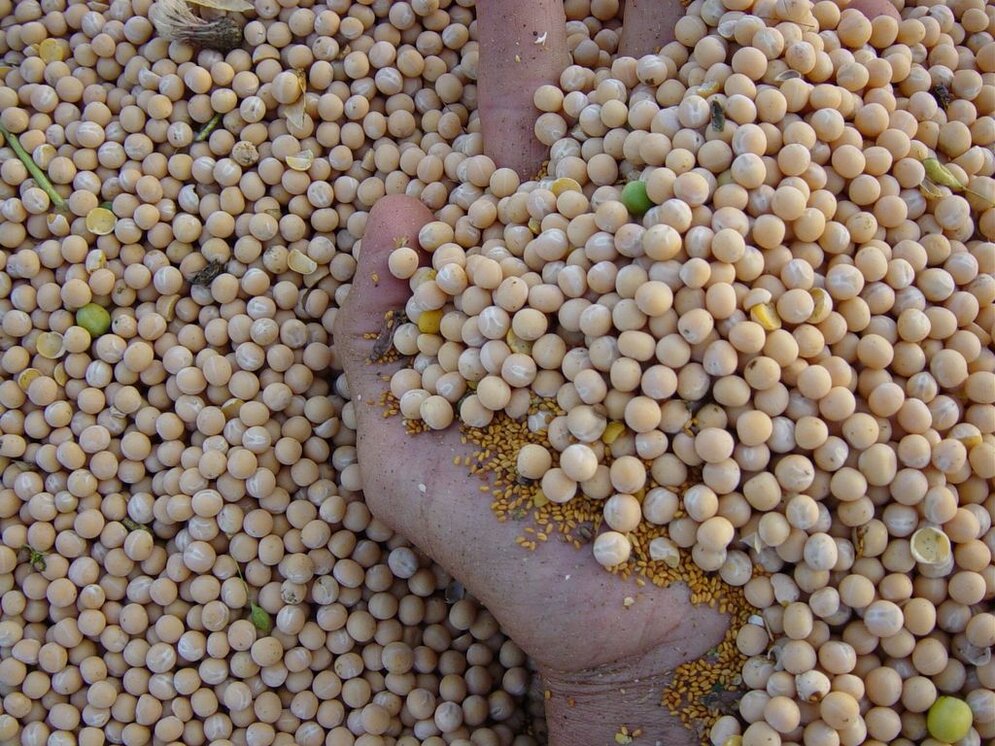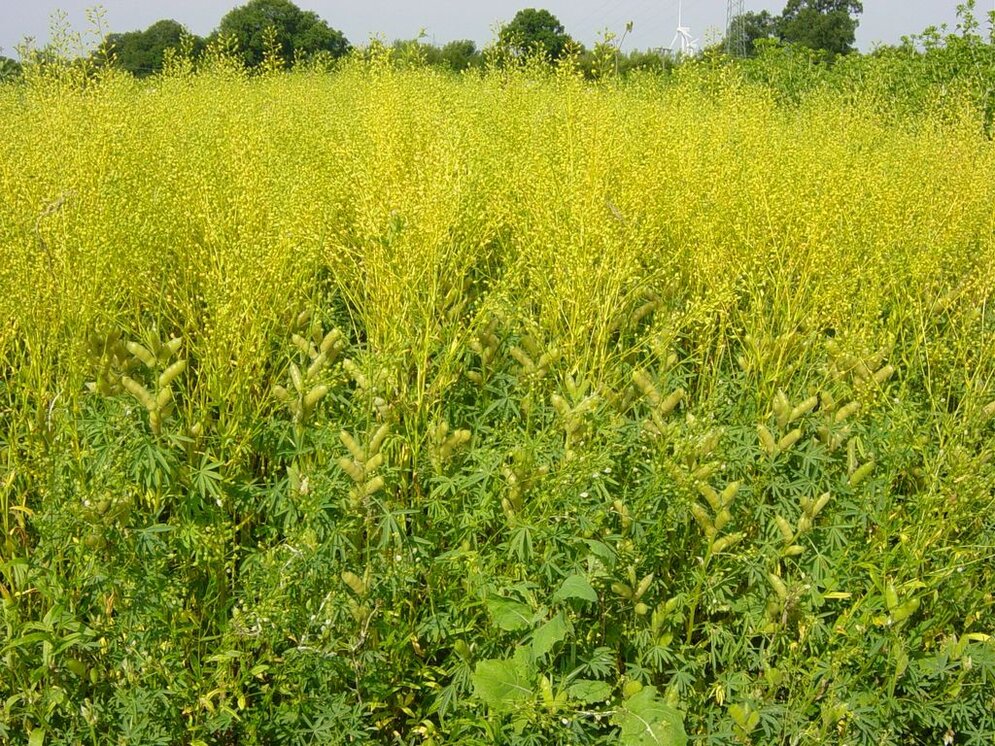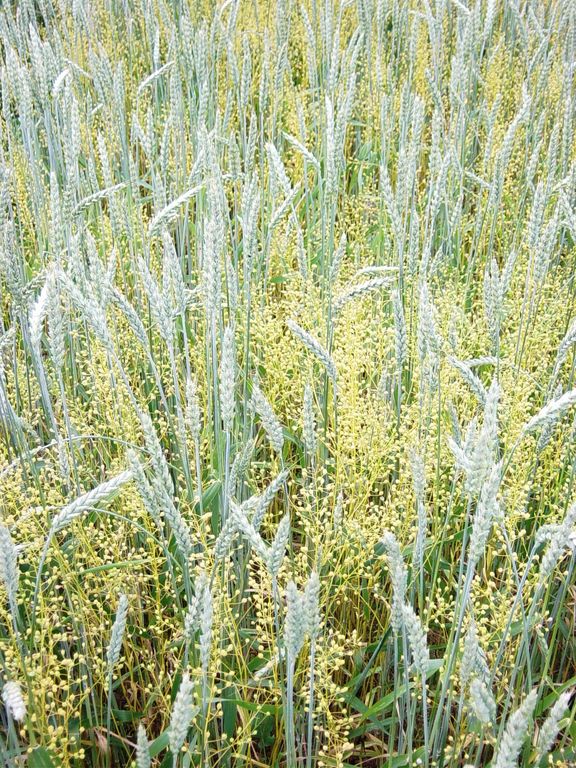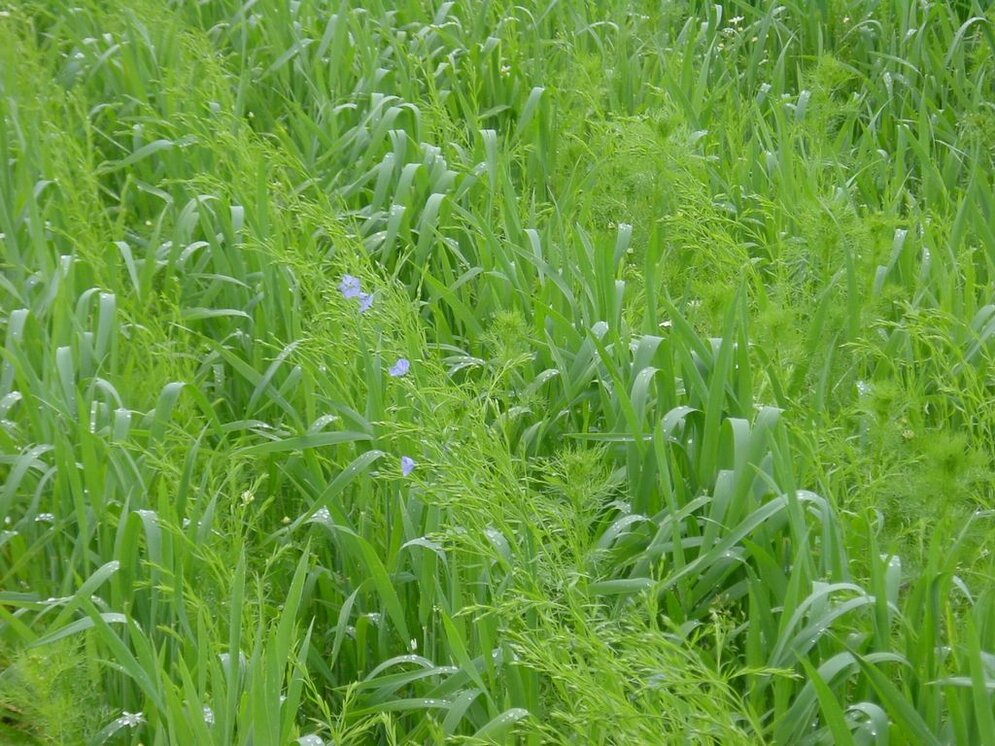Project
Methionine in peas, beans and lupines – Leaf green and root length as selection criteria in plant breeding
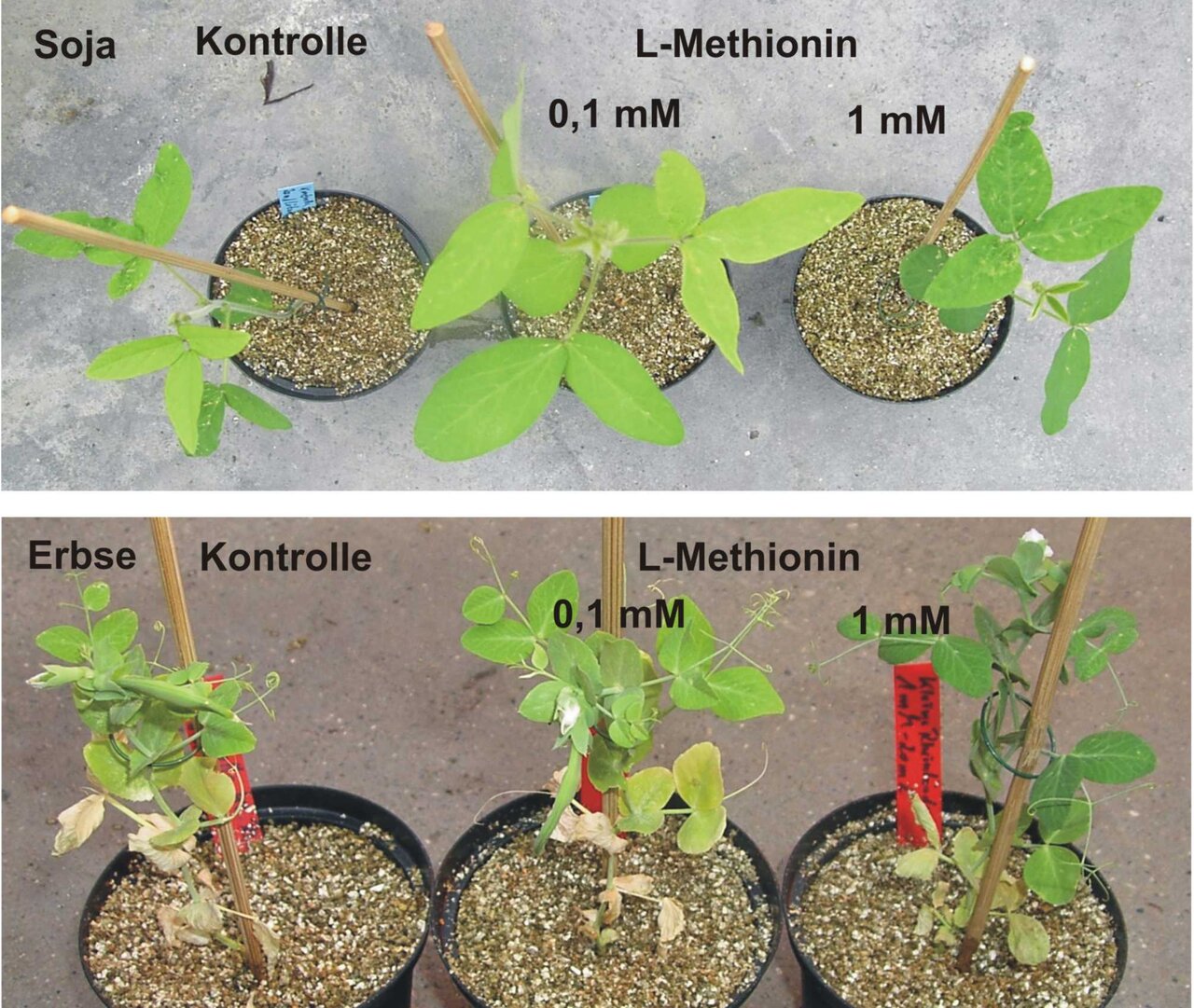
Selection of local grain legumes with elevated methionine contents in seed protein (Vicia faba, Pisum sativum und Lupinus angustifolius)
In organic livestock feeding no supplementation of synthetic amino acids is allowed. High value proteins from organic production are rare and expensive. Grain legumes with high seed methionine contents might help solving the problem. But how to identify them?
Background and Objective
For the goals in organic pig and poultry production it is difficult to supply methionine - an essential amino acid - sufficiently with organic feedstuffs. Seed methionine content is no decisive selection criterion in plant breeding up to know. We analysed possibilities to select plants with high seed methionine content by depth of leaf green, in a test on root length and by simple laboratory methods.
Approach
Our research is based on results from Imsande (2001) in soya we checked the applicability of the methods in beans (Vicia faba), field peas (Pisum sativum) and Blue Lupines (Lupinus angustifolius).
We analysed the bandwidth of methionine contents in the seed protein of 107 varieties and breeding lines of the breeding companies (Analyses according to Guideline 98/64/EG (1998), HPLC-Analyses, Dumas for N). For the tests of the suitability of the selection criteria we used following generations of parent seeds after mutagenic treatment with Ethyl-Methanesulfonate (EMS), one plant varieties per species.
We checked the usability of simple phenotypic selection criteria (chlorophyll content, radicle length in ethionine (et) – a phytotoxic homologue to methionine) as well as cheap chemical selection criteria (S-content of seeds, bacterial test on methionine content). By molecular biological methods we analysed effects of increased methionine contents on the synthesis of chlorophyll and protein expression.
We analysed the suitability of different methods to characterise the green leaf colour (chlorophyll content; by visual and physical compared to chemical measures). The practical suitability of the methods was checked in the glasshouses and nurseries of the plant breeders.
Results
We found no resilient correlation between the chlorophyll content of leaves and the methionine or sulfur contents of seeds.
The methodology of the Et-test was successfully developed in the project, but the present number of analysed samples is too small for a final evaluation of the methodology.
In the Et-test the average relative methionine content (g/16g N) in seeds of selected L. angustifolius plants was significantly higher than in control plants. For the other plant species no accordant differences were found. In seeds from P. sativum plants, which were selected as potentially methionine-rich from the Et-test, high absolute seed-methionine (g/kg) contents were often paired with high absolute sulphur contents.
Regarding the regulatory function of free cellular methionine on protein and gene expression of plants, we found a reduction of general protein expression under addition of methionine to the nutrient solution (1 mM). An assumed link between methionine and chlorophyll biosynthesis could not be confirmed.
From other studies a negative correlation between the seed protein content and relative methionine content that is known. Results of our sample of breeding lines the breeding companies confirmed this. The varieties showed a high variability in the seed methionine content with a positive deviation of 12-22 % (g/16gN) or 16-24 % (g/kg) from the sample mean. The production of methionine enriched grain legumes seems already feasible on basis of the natural variability of the varieties. For this purpose a broad selection of individual plants from the existing varieties and inbredlines according to exactly determined amino acid contents of the seeds is recommended.
Thünen-Contact

Involved external Thünen-Partners
-
Norddeutsche Pflanzenzucht, Hans- Georg Lembke KG
(Hohenlieth, Deutschland) -
Leibniz Universität Hannover
(Hannover, Deutschland) - Georg-August-Universität Göttingen
(Göttingen, Deutschland) - Julius Kühn-Institut - Bundesforschungsinstitut für Kulturpflanzen (JKI)
(Quedlinburg, Braunschweig, Groß Lüsewitz, Kleinmachnow, Deutschland) -
Saatzucht Steinach GmbH
(Steinach, Deutschland)
Funding Body
-
Federal Ministry of Agriculture, Food and Regional Identity (BMLEH)
(national, öffentlich)
Duration
4.2008 - 4.2011
More Information
Project funding number: 05OE024
Funding program: Bundesprogramm Ökologischer Landbau und andere Formen nachhaltiger Landwirtschaft (BÖLN)
Project status:
finished

![[Translate to English:] [Translate to English:]](/media/_processed_/8/e/csm_Bildschirmfoto_2021-03-03_bearb_fc48ac88bf.jpeg)
![[Translate to English:] [Translate to English:]](/media/_processed_/8/e/csm_Bildschirmfoto_2021-03-03_bearb_ba3ec0e9d7.jpeg)
